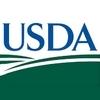Check out what is new in Poultry Industry
Find the best technical articles, forums, and videos on Poultry Industry at Engormix. Enter now and interact with the world's largest agricultural social network.
1. Introduction The world’s chicken meat production has grown markedly in the last few decades, with a 3% increase estimated for 2020 in relation to the 95.5 million tons produced in the year 2019 [1]. Today’s successful production and exports of chicken meat are a result of measures adopted by the poultry industry, with high growth rates, minor feed conversion ratios and elevated meat production [2] that meet the market demands. However, problems that compromise the...
Comments : 0
Recommendations: 0
The demand for poultry products continues to rise and, since the beginning of the COVID-19 pandemic, so has the popularity of backyard poultry flocks. With the current mandates for social distancing and isolation, those who are spending a greater amount of time at home view it as an...
Comments : 0
Recommendations: 0
Ensuring welfare of birds at the farm is key to maintaining a healthy supply of eggs and chicken during the pandemic The COVID-19 pandemic has had a significant impact on various industries, including the poultry and livestock sectors. Livestock prices are...
Comments : 1
Recommendations: 1
1. Introduction The welfare of laying hens has been the subject of interest in consumers, industry, and the government in Chile. The current main egg production system in Chile is the intensive cage system [1], allowing high egg production (3.9 thousand million in 2019) for an increasing human population. Joint efforts have been carried out between the industry, universities, and the government to establish minimum welfare conditions, including the development of the Good...
Comments : 0
Recommendations: 0
1. Introduction Monogastric animal production, in particular the poultry production sector, is growing continuously, driven mostly by the demand for meat and eggs. However, this rapidly growing industry and the increasing demand for poultry feeds have led to a considerable increase in feedstuff prices. The gap between demand and supply of balanced feed is expected to increase, and consequently increase the cost of production....
Comments : 1
Recommendations: 0
1. Introduction Salmonella enterica is one of the leading causes of foodborne illness in the United States and around the world [1,2]. While there are over 2500 serotypes of Salmonella, 20 serotypes, including serotype Infantis, account for most U.S. human infections [3]. Infantis was the sixth most common serotype associated with human infections in 2016 and the fifth most common serotype isolated from chicken products in the U.S. in 2014 [3,4]. Infantis has consistently been...
Comments : 0
Recommendations: 0
Introduction The application of sub-therapeutic doses of growth-promoting antibiotics (GPAs) in the poultry industry has allowed the development rate and production yield of the birds to be increased while preventing infections [1] by changing their intestinal microbiota, metabolism, and intestinal function [2]. Feeding is a particularly important factor in commercial poultry farming as it represents approximately 70% of the total cost of production, which has led to increased...
Comments : 0
Recommendations: 0
The International Egg Commission (IEC) and International Poultry Council (IPC) have signed a renewed Memorandum of Understanding (MOU) to strengthen their longstanding relationship and support continued growth in the egg and poultry industries.
Under the updated agreement, which was signed by IEC Chairman, Suresh Chitturi, and IPC President, Robin Horel, the organisations will work together on areas of joint interest including zoonosis and avian diseases, as well as...
Comments : 0
Recommendations: 0
Mycotoxin contamination is one of the serious threats to animal feed and human food manufacturing. Mold infection may occur at all stages from field crop planting to post-harvest storage and transportation. Even under good management, mycotoxin contamination caused by mold infection is considered an inevitable problem. In addition, many mycotoxins are not easily removed through processing, they are stable to heat, physical and chemical treatments. More than 500 types of mycotoxin have...
Comments : 0
Recommendations: 1
Chicken meat is a common meat in Manokwari, West Papua, Indonesia and it is sold both in fresh and frozen forms. Fresh carcasses are usually from local producers while frozen carcasses are supplied from other regencies (administrative entities). Fresh carcasses are generally sold in traditional markets and frozen carcasses sold in both traditional markets and supermarkets.
Chicken meat is an ideal medium for many microorganisms especially pathogenic bacteria which lead to spoilage...
Comments : 0
Recommendations: 0
INTRODUCTION Natural antioxidants play important roles in maintaining chicken health, productive and reproductive performance of breeders, layers, rearing birds, and growing broilers. There is a wide range of antioxidant molecules in the body. Some of them are supplied with feed (vitamin E, carotenoids, selenium), others are synthesized in tissues (ascorbic acid, coenzyme Q [CoQ], carnitine, taurine, antioxidant enzymes, etc.). In the body all...
Comments : 0
Recommendations: 0
...
Comments : 0
Recommendations: 0
...
Comments : 0
Recommendations: 0
I. INTRODUCTION The use of feed additives such as those based on essential oils or organic acids is increasing in poultry production as a result of a number of factors including legislation on restricting antibiotic use and consumer preferences for more natural, welfare friendly poultry production. Formic and propionic acid products have a strong antimicrobial activity and have been shown to improve bird performance and positively influence the gut microbiota (Emami et...
Comments : 0
Recommendations: 1
There is increasing pressure for the use of antibiotic growth promoters (AGPs) in poultry diets to be discontinued or reduced. In this context, the search for natural additives such as organic acids (OA) and essential oils (EO) has increased. Previous studies have reported beneficial effects on gut health of supplementing poultry diets with these natural feed additives. As in many countries the use of AGP is still allowed and the adoption of programs combining the effects of AGPs with feed...
Comments : 1
Recommendations: 3
I. INTRODUCTION There is considerable interest in the development of low protein diets balanced with supplemental amino acids for broiler chickens due to economic, environmental and bird welfare advantages (Moss et al., 2018). However, under commercial feeding conditions, chickens are exposed to various challenges of infectious and non-infectious origin. For challenges of infectious origin, even without any clinical signs of disease, animals affected by chronic subclinical...
Comments : 1
Recommendations: 1
Decisions that impact hen welfare may be influenced by the expectations of the community, such as development of regulations (Coleman et al., 2018). Although some reaserch has been conducted on Australian consumer attitudes (Bray and Ankeny, 2017), wider community perceptions (for example, vegans) towards laying hen welfare remain largely unknown.
This research was approved by the University of New England’s Human research ethics committee (HE18-235). Focus groups of industry...
Comments : 0
Recommendations: 0
I. INTRODUCTION Since the 20th century when commercial poultry breeding first started, the growth rate of meat chickens has quadrupled, and their body structure has also changed dramatically especially with the enlarged size of the breast muscles (Muir and Aggrey, 2003). This is the result of a combination of selective breeding, efficient production systems, improved diets and veterinary care (Fanatico et al., 2007). It now takes about 38 days for day old fast-growing broilers...
Comments : 0
Recommendations: 0
Free range hens are exposed to various potential stressors including weather conditions and risk of predation (Gilani et al., 2014). Distress can result in impaired biological functions including reduced reproduction, immunity and growth (Palme, 2012). In order to investigate the impact of early range usage, corticosterone concentrations in egg albumen were measured in response to a stressor (manual handling and relocation) in free range hens. Two groups (n = 625) of commercial free...
Comments : 0
Recommendations: 0



.jpg&w=3840&q=75)








.jpg&w=3840&q=75)





.jpg&w=3840&q=75)
















